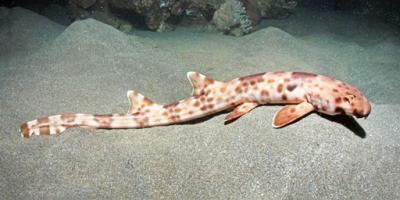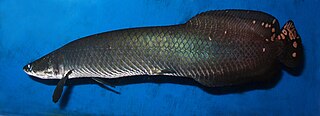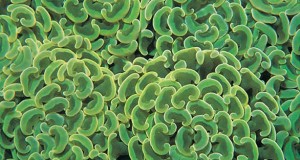Even considering that new fishes are discovered at the rate of nearly two per week, 2013 was a spectacular year for fish enthusiasts. Included among the undescribed new fish species brought to light in 2013 were several relatives of common marine and freshwater aquarium fishes, numerous sharks (including a large hammerhead off South Carolina), a knife fish that utilizes a different type of electric current than all others, a bizarre beast from the depths of the Antarctic’s Ross Sea, one of the world’s smallest vertebrates, and one of the world’s largest freshwater fishes. The diversity of these new species is staggering, and all seem to have amazing traits, so I was hard-put to select my favorites. Please be sure to share information about those that caught your eye by posting below.
Giant Oarfish, Regalecus glasne
The Giant Oarfish is not a newly-discovered species…in fact, it has been inspiring tales of sea serpents for thousands of years. But despite being the world’s longest boney fish, this 30+ foot-long behemoth is so rarely seen that I felt compelled to mention it here. Fish-watchers were quite surprised when two individuals washed up off southern California in less than a week…and both were in great condition. Measuring 14 and 18 feet long, one contained hundreds of thousands of eggs, while the other was infested with large tapeworm-like parasites.
Arapaima, Arapaima leptosome
At a weight of over 400 pounds, South America’s air-breathing, torpedo-shaped Arapaima is one of the world’s largest freshwater fishes. It was not until 2013 that ichthyologists learned that a second species was “hiding in plain sight” (in commercial aquariums, even!). Distinguishing the new species is important, as Arapaima have been hunted to near extinction across much of their range. Slight differences in the natural histories of the two species may help us to understand how best to conserve them.
Blue-Bellied Night Wanderer, Cyanogaster noctivaga
The fish bearing this long name is, at 0.68 inches in length, one of the world’s smallest vertebrates; it misses being the world’s tiniest fish by a mere 7mm. Size was not all that helped to keep this fish hidden for so long…it is also transparent and nocturnal, and “wanders” in the tea-colored waters of the Rio Negro.
Hopbeard Plunderfish, Pogonophryne neyelori
This fish’s appearance is stranger than its name. Looking like a cross between an Oyster Toadfish and a tadpole, the Hopbeard Plunderfish was hauled up from 4,560 feet below the surface of the Antarctic’s Ross Sea by Ukrainian commercial fisherman. As you can well imagine, we know nothing of its natural history (and, I’m guessing, may not for some time!).

Uploaded to Wikipedia Commons by EurekAlert.org
Long-Tailed Carpet Shark, Hemiscyllia Halmahera
This 28-inch-long, attractively-marked shark is related to the Epaulette or “Walking” Sharks, several of which are popular in the aquarium trade. A flexible body and leg-like pectoral and pelvic fins allow it to prowl about tide pools and submerged rocks in search of marine worms, crabs and shrimps. Western Australian Museum ichthyologists discovered it off the East Indonesian island of Ternake, which is part of the Maluku Island chain.
Bluntnose Knifefish, Brachyhypopomus bennetti and walteri
Knifefishes, several of which are popular in the aquarium trade, are known to use electric currents to assist in navigation. One species, the misnamed “Electric Eel”, also uses electricity to both hunt and defend itself. The newly-described species emit electric currents from an organ in the tail. Like all other electric-producing fish, B. walteri releases alternating positive and negative pulses. B. bennetti, however, is unique in that it produces only a direct, one phase current. This fish lives below floating weed masses in Brazil, and seems especially prone to losing part of its tail to predators. The navigational abilities of knifefishes that produce alternating currents are severely hampered if they lose a portion of the tail. However, B. bennetti seems not to suffer when the tip of its tail is lost, as the direct current it produces functions just as well…an amazing adaptation if ever there was one!
More Sharks Discovered in 2013
The 8-12-foot long Carolina Hammerhead, Sphyrna gilbert resembles the better-known Scalloped Hammerhead, but is genetically and structurally distinct. It is the largest fish to be found in such a developed area (inshore, off South Carolina) this year.
Sawsharks resemble sawfishes. Their “saws”, which bear barbels at the half-way point, are used to disable the fishes upon which they feed. The new species discovered in 2013, Pristiophorus lanae, hails from the Philippines. Little is known of its natural history.
Further Reading
 That Fish Blog – Aquarium Advice and Information
That Fish Blog – Aquarium Advice and Information




